
Greenhouses can be a great way to grow plants out-of-season. However, if you’re familiar with growing in a greenhouse you know that it also has the potential to be infiltrated with bugs if certain precautions aren’t taken.
While bugs can’t be avoided completely, there are a few different ways to ensure your greenhouse isn’t overrun by these pests and your garden continues to flourish.
We will discuss the best ways to keep bugs out of your greenhouse, including:
- How to recognize problematic greenhouse bugs,
- How to prevents bugs from entering your greenhouse,
- How to monitor your greenhouse for bugs and prevent a full infestation, and
- How to get rid of a bug infestation after it occurs.
How To Recognize Problematic Greenhouse Bugs?
If you’re not sure what bugs to look out for in your greenhouse it makes it even harder to keep them out.
Some of the most common greenhouse bugs can be sorted into different categories:
- Sap feeding insects, and
- Pollen feeding insects.
While of course there are other greenhouse pests to look out for such as rodents, caterpillars, slugs, and snails, we won’t be discussing these in this article as we are focusing on greenhouse bugs.
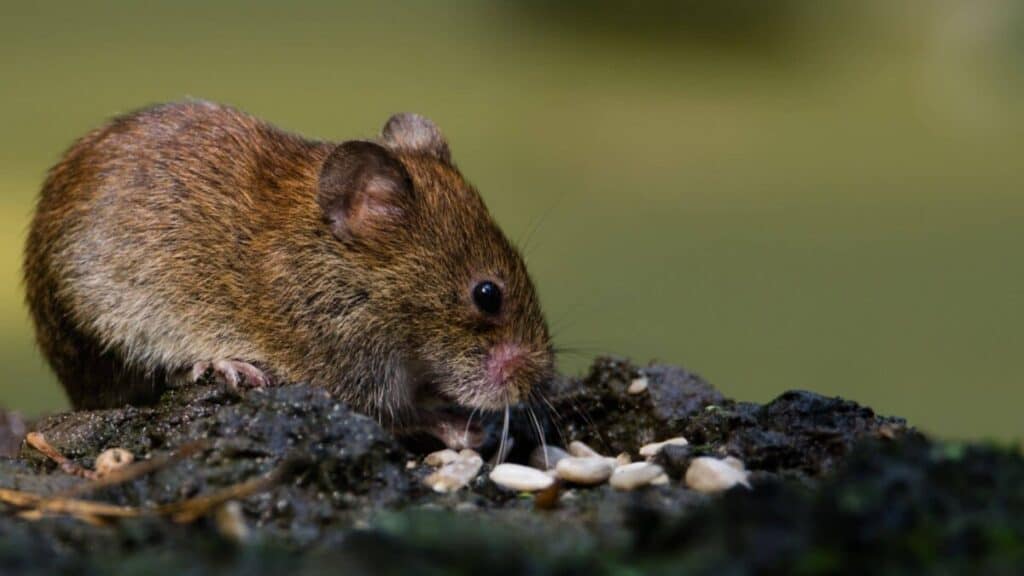
Sap-feeding insects are those that feed on the foliage and sticks of your plants. Problematic varieties of these include aphids, mealybugs, mites, whiteflies and scales.
All of these are fairly small bugs that can be difficult to see unless you know what you’re looking for.
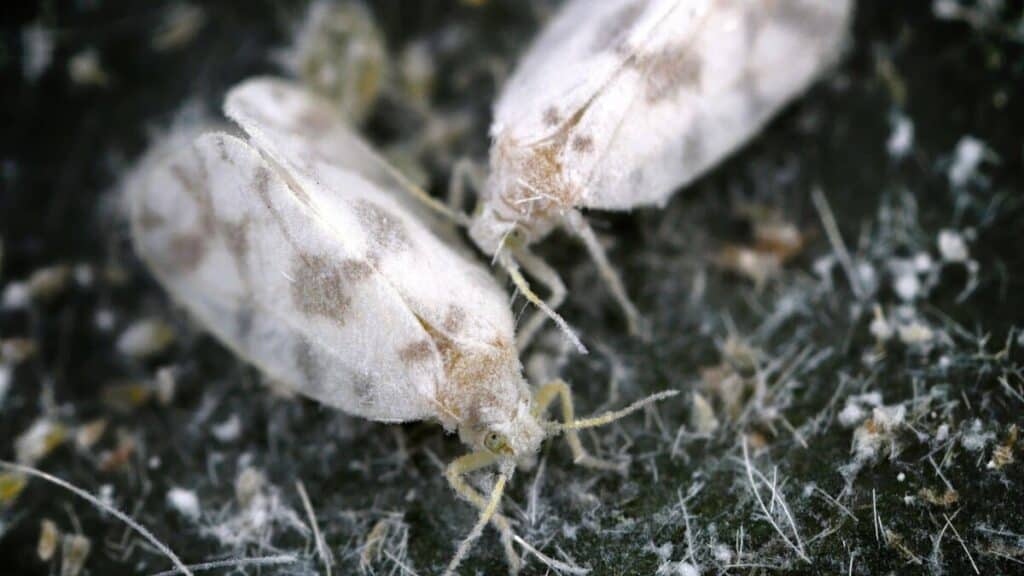
Pollen feeding insects, as their name indicates, feed on the pollen from your plants. While we all know bees are a common pollen feeding insect, they aren’t the kind you need to watch out for in your greenhouse.
Instead, the pollen feeders that cause issues include thrips, fungus gnats, and shore flies.
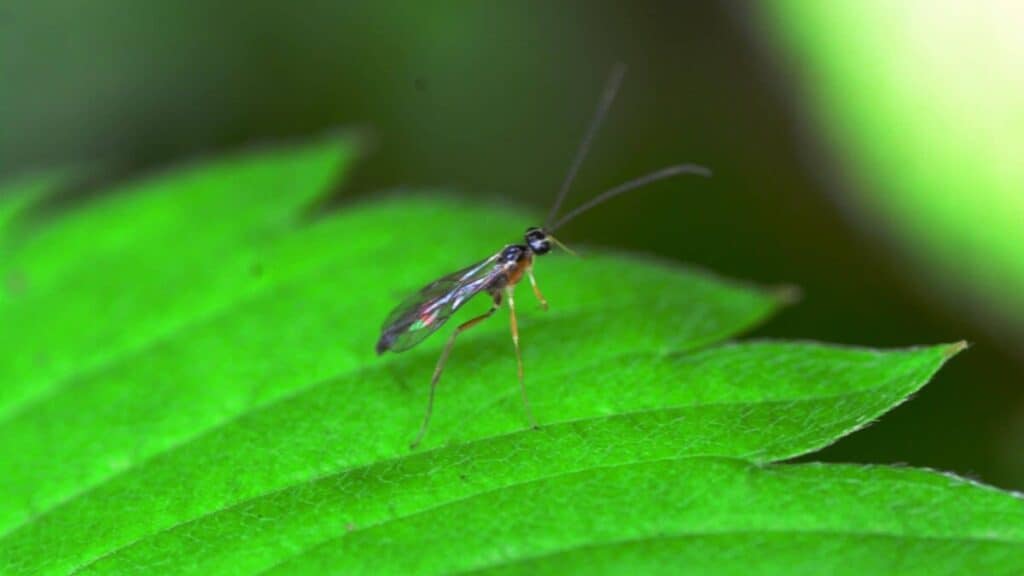
Thrips are small bugs, similar in size to a small ant. Shore flies and fungus gnats aren’t problematic for plant health at their adult age, however their larvae will feed on the roots of plants.
How To Prevent Bugs From Entering Your Greenhouse?
The best way to avoid bug infestations is to take precautions that prevent bugs from having easy access into your greenhouse.
There are three main things to consider:
- The construction of your greenhouse,
- The surrounding area of your greenhouse, and
- The items being brought into your greenhouse.
Consider The Construction Of Your Greenhouse
First, let’s discuss the actual construction of your greenhouse. For one, although your greenhouse likely didn’t come with a built in floor and instead the ground beneath it acts as a floor, you may want to affix some sort of heavy plastic sheeting to the ground.
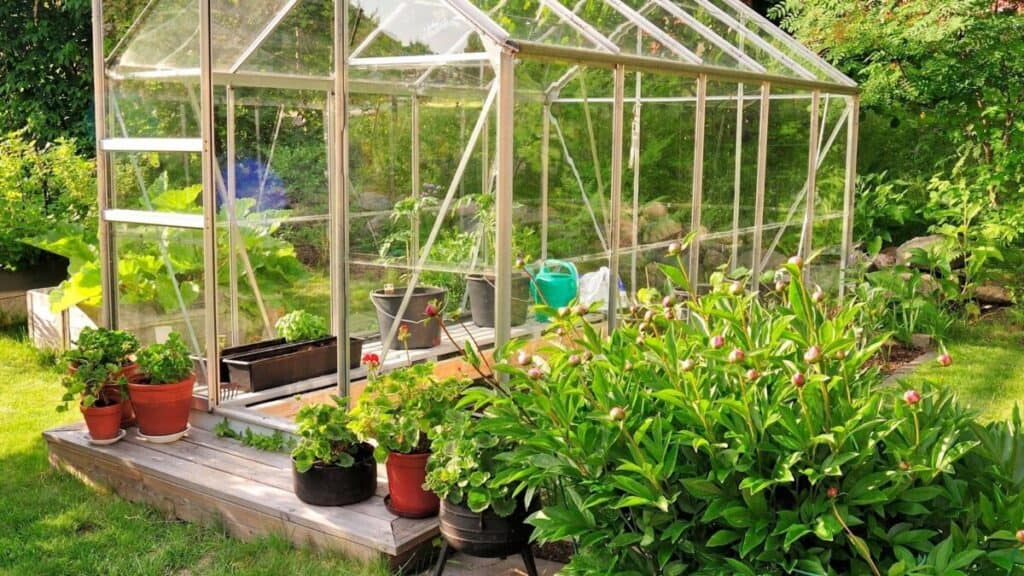
This will prevent bugs from entering the greenhouse through the earth. Even if you have gravel, there is still a higher likelihood for bugs to enter the greenhouse this way.
An exception may be if your greenhouse sits on concrete or pavement, this would be an effective flooring for preventing bugs.
Next, you should make sure that any openings, including windows, vents, or fans, all have screens attached to them. The screens should have openings that are at most 1/10 inch wide to prevent most bugs.
However, some pests, such as thrips, can enter through these. If you have extra money to spend you can look into woven brass screens with openings less than 4/100 of an inch.
And finally, make sure there are no other holes or areas in your greenhouse that are open to the outside. If there are, you will need to repair those areas.
Consider The Surrounding Area Of Your Greenhouse
After you’ve looked at the construction of your greenhouse you should turn your attention to the surrounding area.
It is best to keep the land around your greenhouse free from plants. If plants are growing near the greenhouse there is a greater chance that bugs nearby will find a way to enter, such as when you are opening or closing the door.
Monitor The Items That Are Brought Into The Greenhouse
Finally, you should also make sure that any plants, tools, or soil entering the greenhouse have been cleaned and inspected for bugs.
Use only soil bought from the store that hasn’t been opened, inspect and clean any plants being brought in, and wash off any tools that have been used outside.
You may even consider leaving special shoes in your greenhouse and leaving your other shoes outside.
How To Monitor Your Greenhouse For A Bug Infestation?

It is important to inspect your plants daily or once every two days at minimum. This inspection will help you find indications of insects before there is a full-on infestation happening in your greenhouse.
In order to recognize signs of insects you need to know what to look out for. So, let’s go back to our discussion on the specific insect types.
Sap-feeding insects such as aphids, mealybugs, and scale will usually leave trails of sticky honeydew residue behind them when they feed. This can be visible on your plants.
Your plants also may appear yellow, distorted, or just generally unhealthy. These bugs are also visible to the naked eye, so you should be able to see them on your plants.
However, mites are invisible to our eyes and you need a magnifying glass to see these bugs. Mites don’t leave behind the same sticky trail of honeydew, but rather a fine silk-like strand. They cause damage similar to other sap feeders.
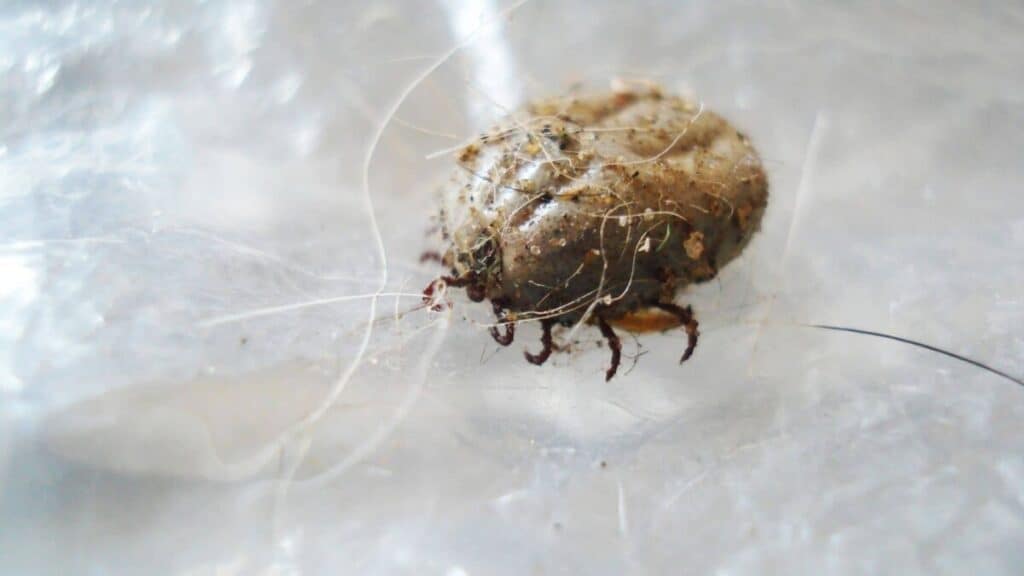
Whiteflies do have wings and look similar to small moths, however they usually only fly when they are disturbed. They cause the same damage as the other sap feeders and can be seen with a naked eye.
Now, onto the pollen feeders. Thrips are fairly small, about the size of a tiny ant. They will spread the pollen from your plant all over it and often leave trails of fecal specks.
The fungus gnats and shore flies are easy to identify when they are adults, and finding a larvae infestation may be as simple as noticing where the adult flies are hovering.
They will generally hover around the bases of the plants where their larvae are feeding. The plants will appear wilted.
How To Get Rid Of A Bug Infestation?
There are a few ways to get rid of a bug infestation, and your preference likely depends on whether you support the use of insecticides or not.
If you are averse to using insecticides you can try rinsing your plants that are infected with sap feeding insects.
Although this can be time consuming, most of the time these bugs can be washed away with plain water.
You can even consider using a small amount of dish soap when washing the plants, while a lot may harm your plants, a small, diluted amount will likely do them no harm.

You may have to repeat these washings for a few days until all the signs of the bugs are gone.
You can also consider bringing in helpful bugs. Although this seems counterintuitive, some bugs, such as ladybugs, will eat sap feeders like aphids and can help protect your plants. This is another completely natural way to try and eliminate pests.
Ladybugs can be attracted naturally by planting flowers if they are attracted to pollen, however your best bet inside a greenhouse would likely be to purchase some ladybugs and release them into your greenhouse.

Another option without using chemicals that works well for flying pests such as whiteflies, gnats, and shore flies is the sure of sticky traps. These can be hung from the ceiling of your greenhouse.
If you are comfortable using insecticides you can consider using an insecticidal soap or spray on your plants.
These work effectively and quickly, however, you want to take care not to use too much of these as they can enter your soil and can be potentially harmful to the consumer of any plants.
You should also take care to do your research before picking an insecticide and find one that is less harmful to health and the environment.
Final Thoughts: It Is Possible To Keep Bugs Out Of Greenhouses Using Proactive Prevention Methods!
While it may not be easy to keep bugs and other pests completely out of your greenhouse, there are many ways you can limit the chances of a bug infestation.
By making sure your greenhouse has no large openings not covered by a screen, secure flooring, and no holes or breaks in the exterior you can monitor the access outside insects have to your greenhouse.
By inspecting plants before they are brought in, and making sure items entering the greenhouse are clean, you can prevent many bugs from hitching an easy ride into your greenhouse.
You should be inspecting your plants regularly and looking for signs of bugs so that way you can catch the issue before it becomes a full blown infestation.
There are many ways to get rid of insects after they’ve entered your greenhouse, whether through natural methods or the use of insecticides.
No matter what method you use, it will be possible to get your greenhouse bug-free again!
Alright, that’s it for this article, here are a few hand-selected articles that you might also find interesting reads:
How to Keep Bugs Out Without Door ScreensHow to Keep Bugs Out of Your Compost Bin
How to Keep Bugs Out of Your Window Sill
Recent Posts
Tiny Black Bugs in Bathroom NO WINGS: What They Are and What to Do!
Finding tiny black bugs in your bathroom can be uncomfortable, to say the least. Especially if they are persistent, or they appear in very large numbers, which they often like to do. When it...
Tiny Black Bugs in Plant Soil - What Are They & What To Do About It
A short horror story: You get a new houseplant. You do your best to take care of it. You’ve ensured that it has the right soil, the right amount of sun, it gets enough water. And then one day, you...

